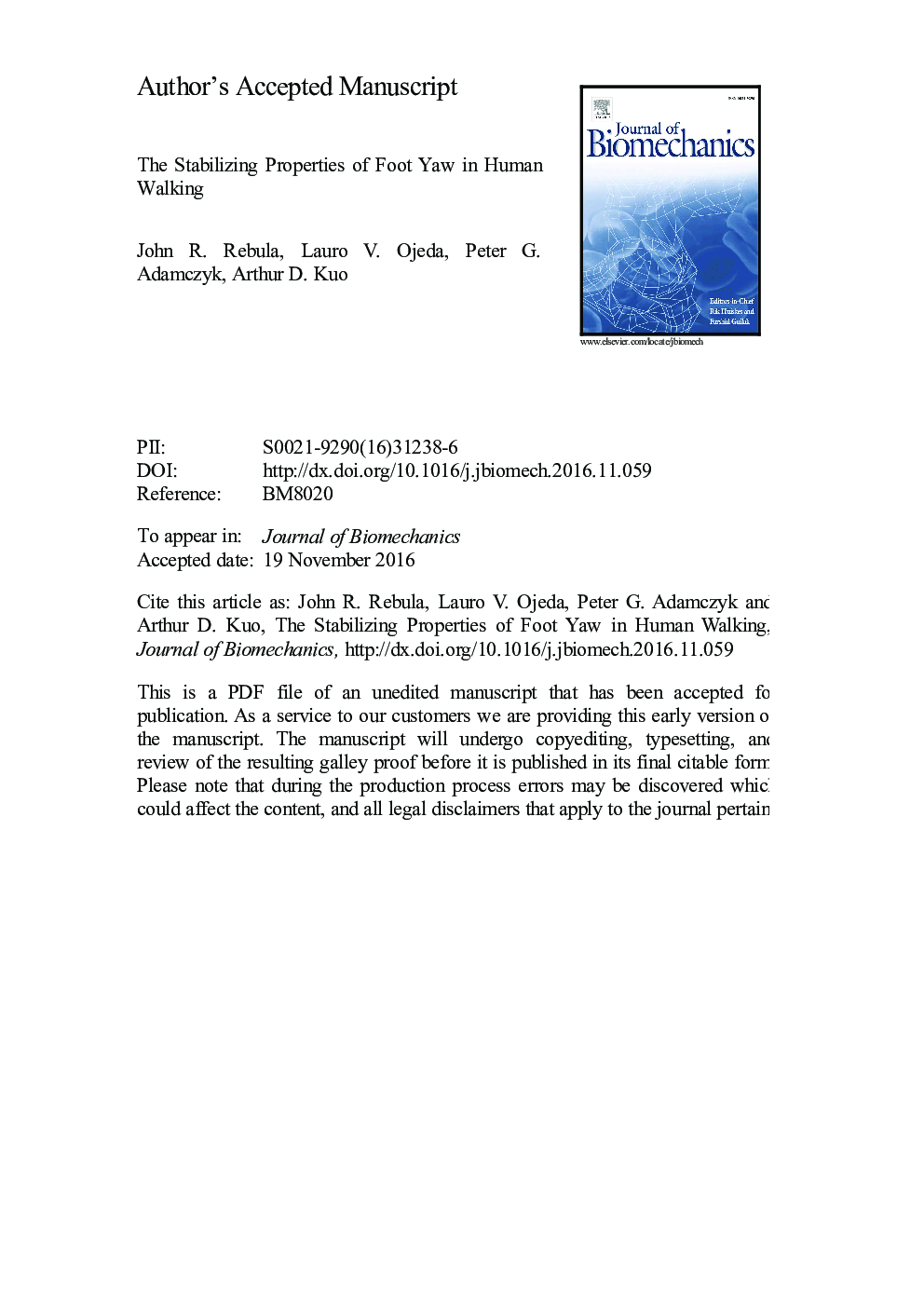| Article ID | Journal | Published Year | Pages | File Type |
|---|---|---|---|---|
| 5032184 | Journal of Biomechanics | 2017 | 35 Pages |
Abstract
Humans perform a variety of feedback adjustments to maintain balance during walking. These include lateral footfall placement, and center of pressure adjustment under the stance foot, to stabilize lateral balance. A less appreciated possibility would be to steer for balance like a bicycle, whose front wheel may be turned toward the direction of a lean to capture the center of mass. Humans could potentially combine steering with other strategies to distribute balance adjustments across multiple degrees of freedom. We tested whether human balance can theoretically benefit from steering, and experimentally tested for evidence of steering for balance. We first developed a simple dynamic walking model, which shows that bipedal walking may indeed be stabilized through steering-externally rotating the foot about vertical toward the direction of lateral lean for each footfall-governed by linear feedback control. Moreover, least effort (mean-square control torque) is required if steering is combined with lateral foot placement. If humans use such control, footfall variability should show a statistical coupling between external rotation with lateral placement. We therefore examined the spontaneous fluctuations of hundreds of strides of normal overground walking in healthy adults (N=26). We found significant coupling (P=9·10â8), of 0.54 rad of external rotation per meter of lateral foot deviation. Successive footfalls showed a weaker, negative correlation with each other, similar to how a bicycle׳s steering adjustment made for balance must be followed by gradual corrections to resume the original travel direction. Steering may be one of multiple strategies to stabilize balance during walking.
Related Topics
Physical Sciences and Engineering
Engineering
Biomedical Engineering
Authors
John R. Rebula, Lauro V. Ojeda, Peter G. Adamczyk, Arthur D. Kuo,
